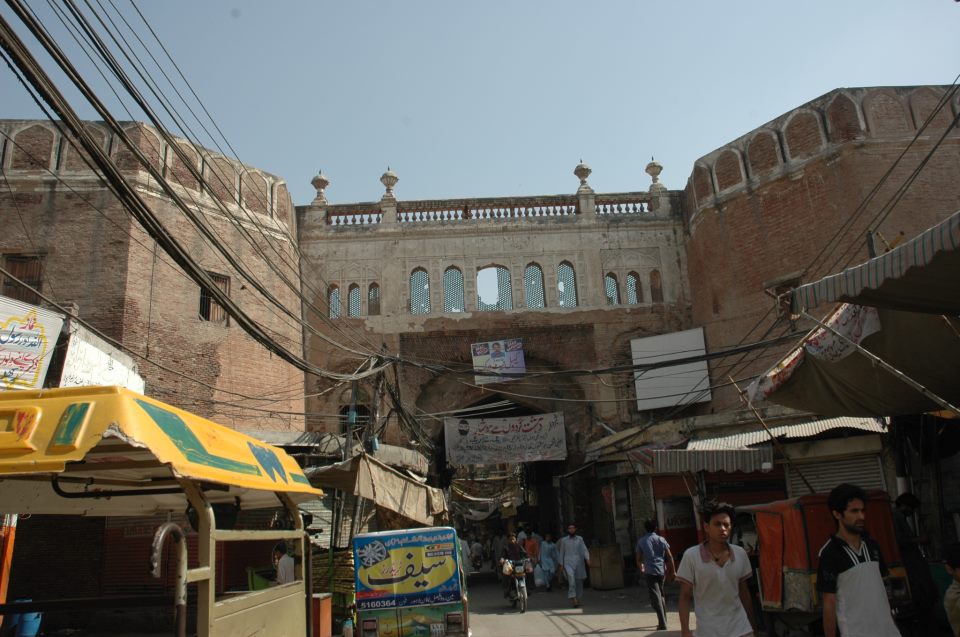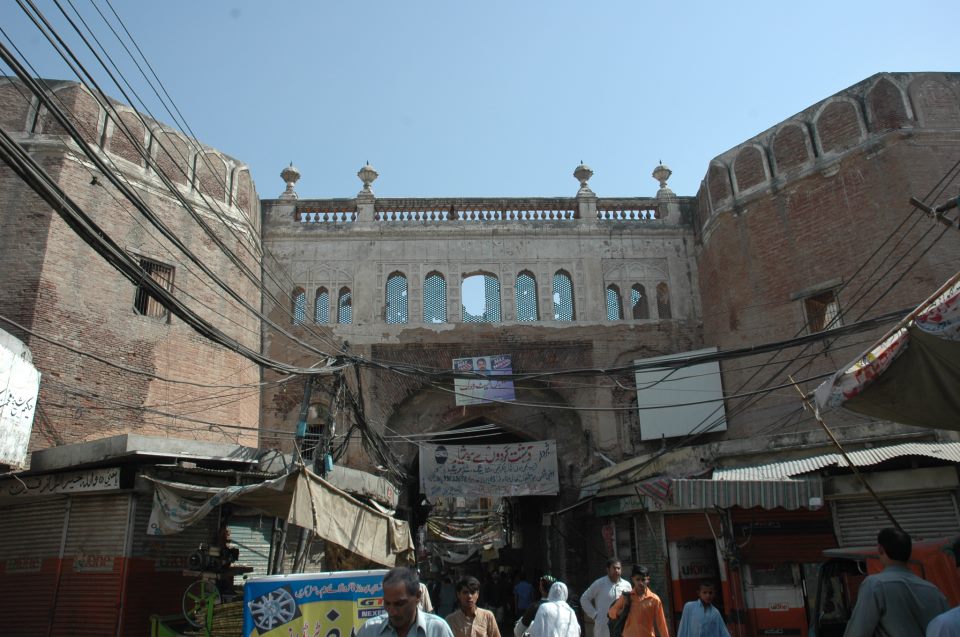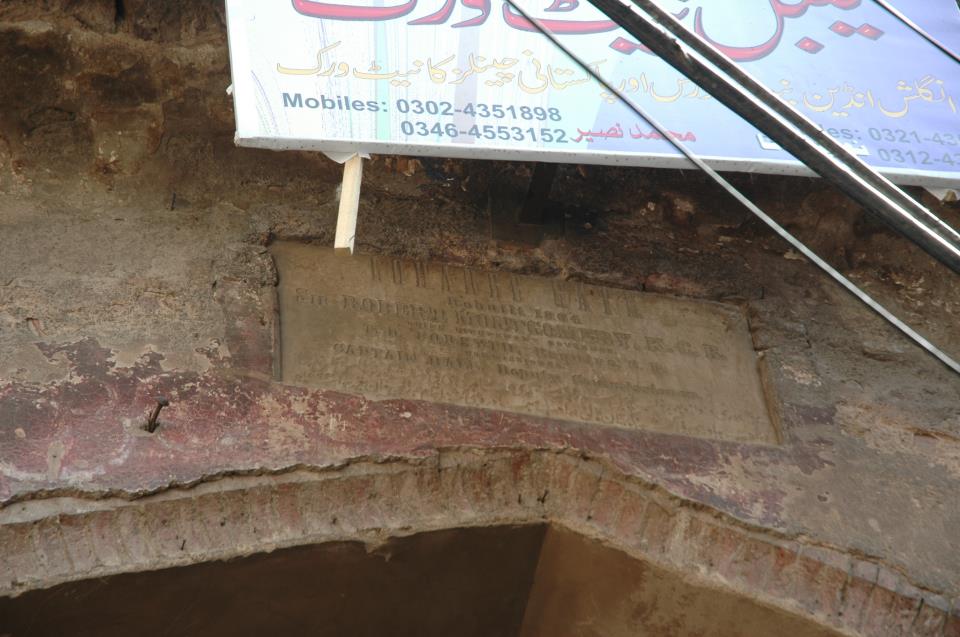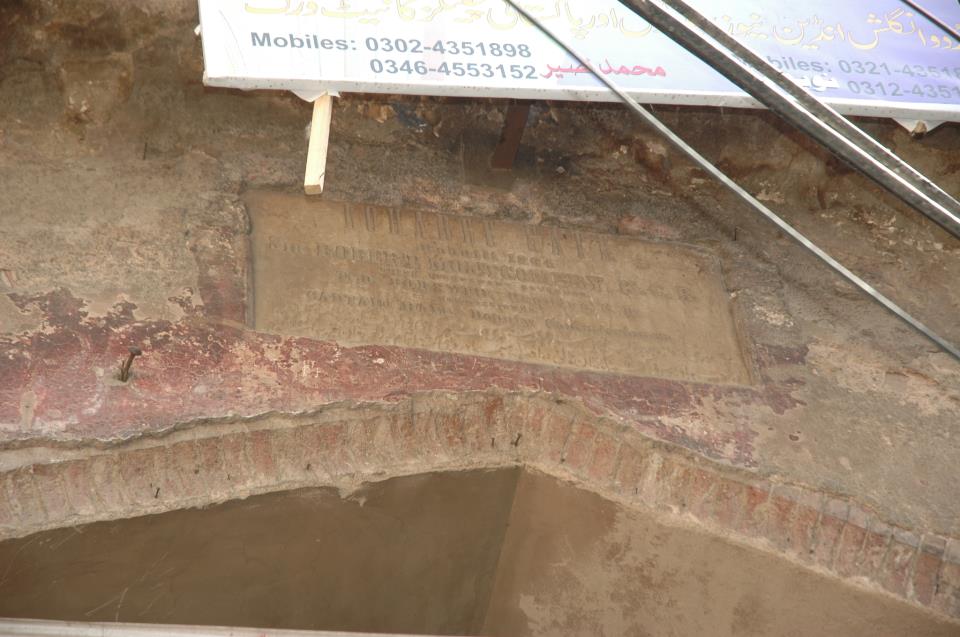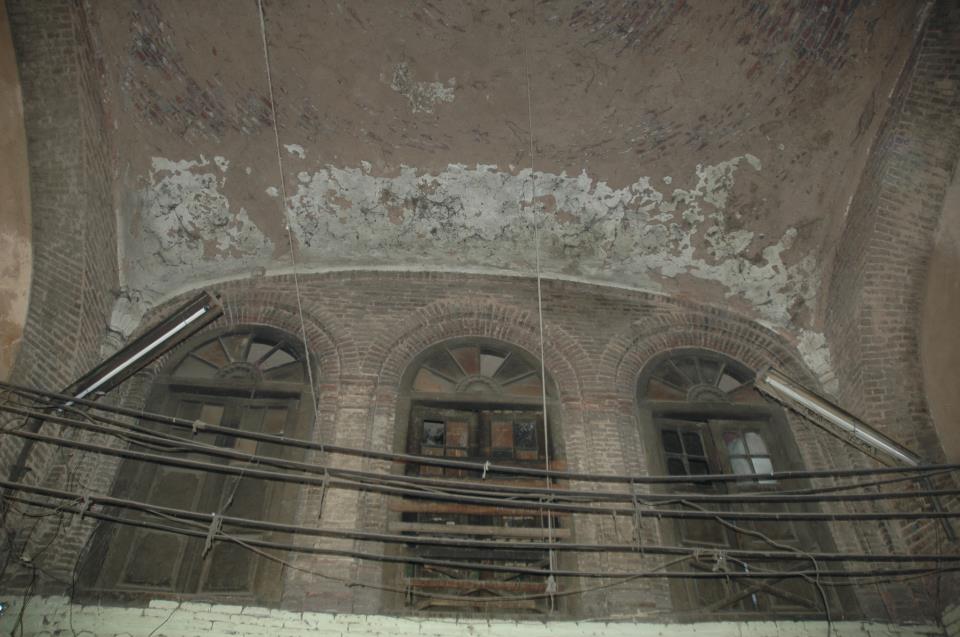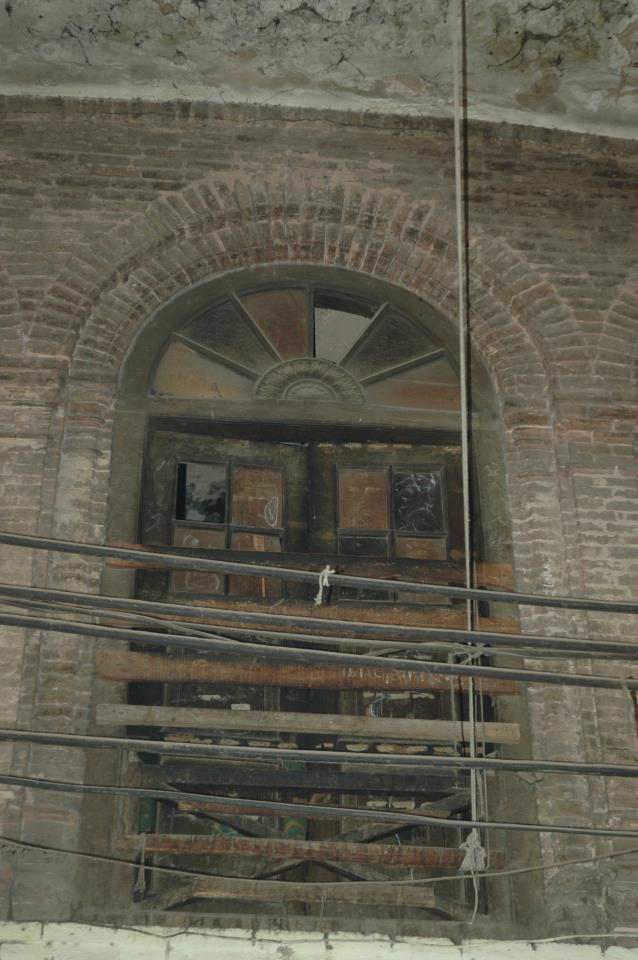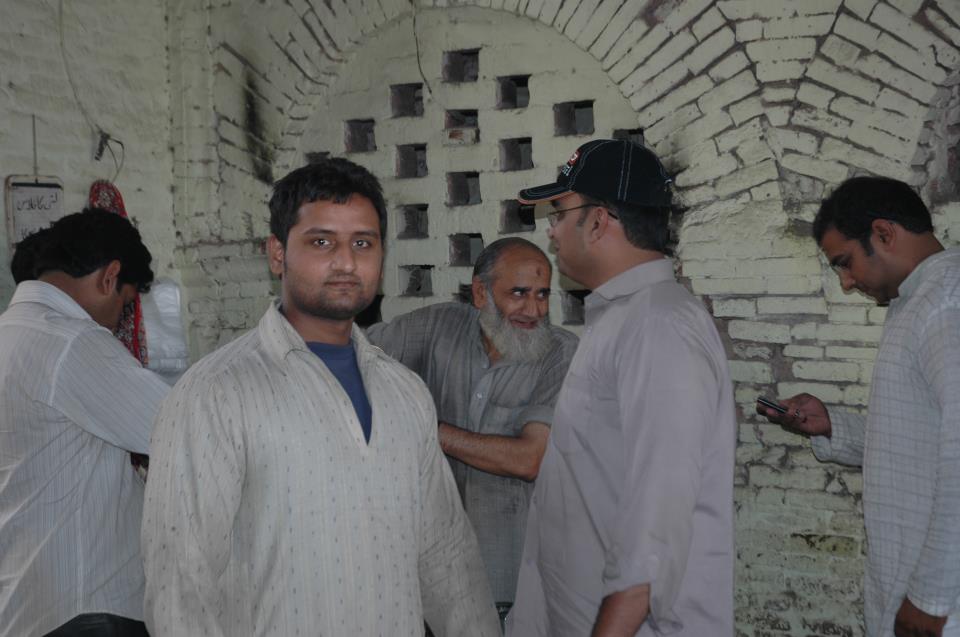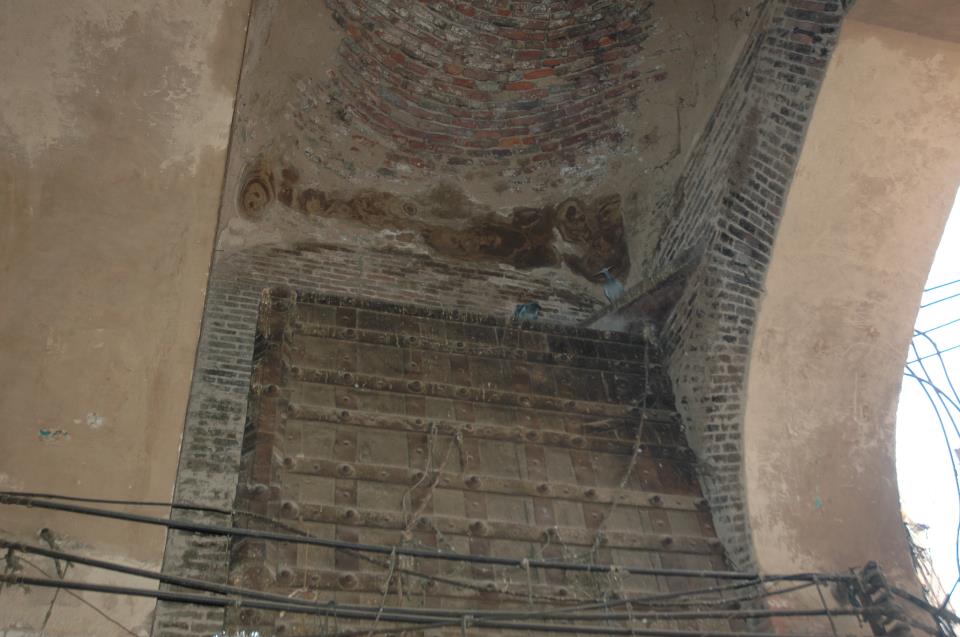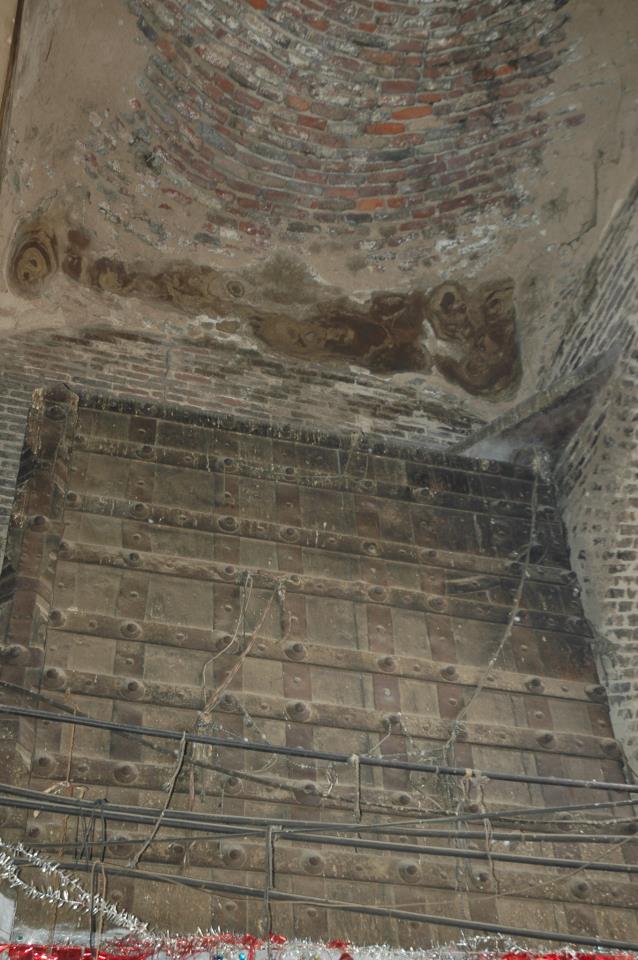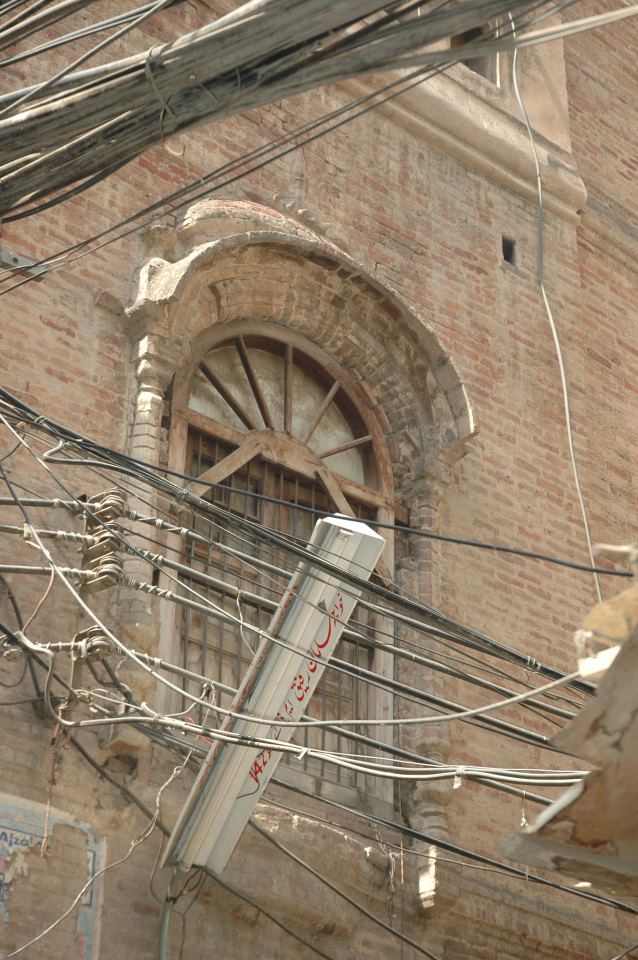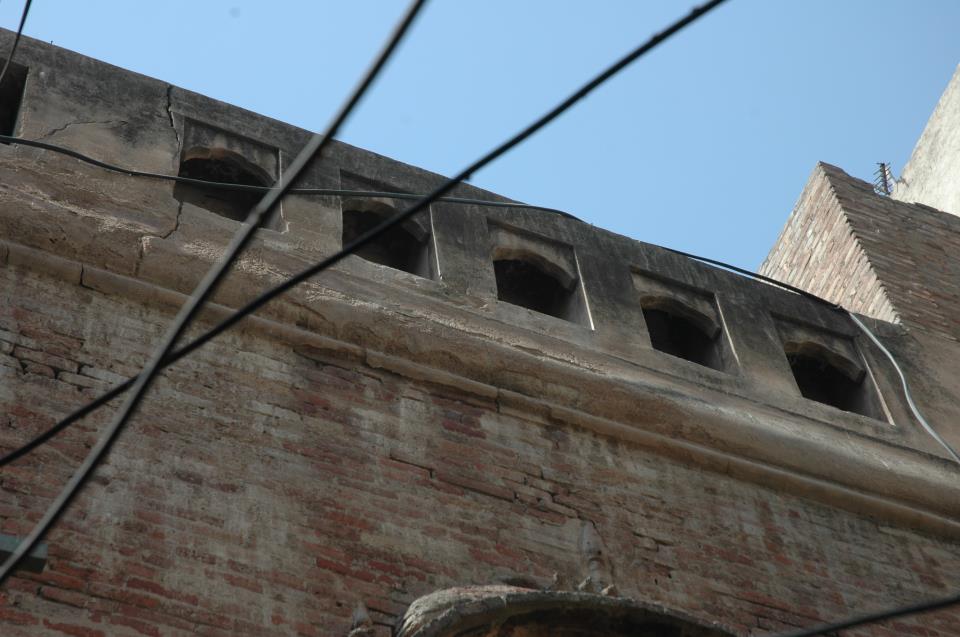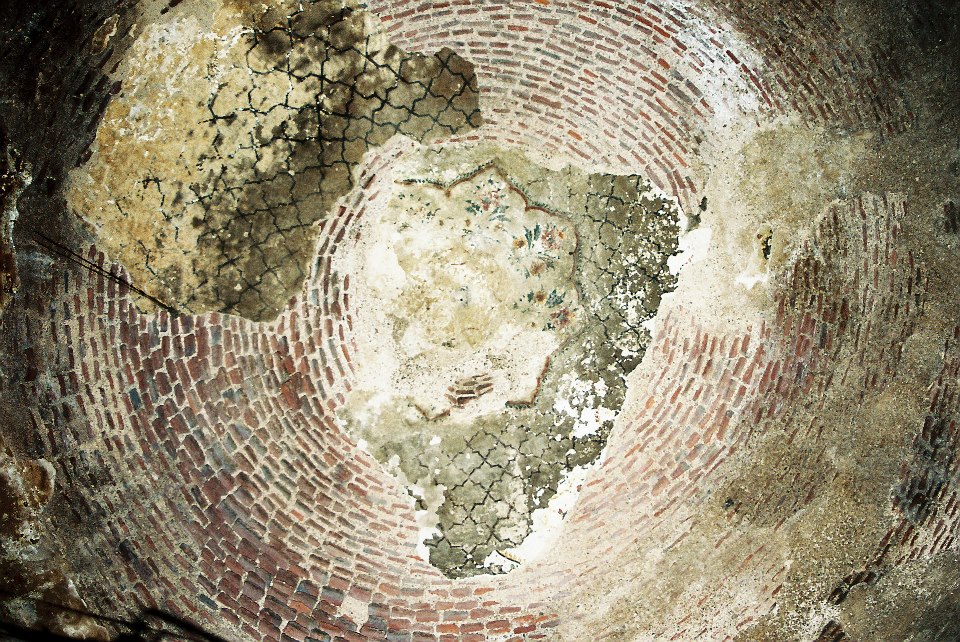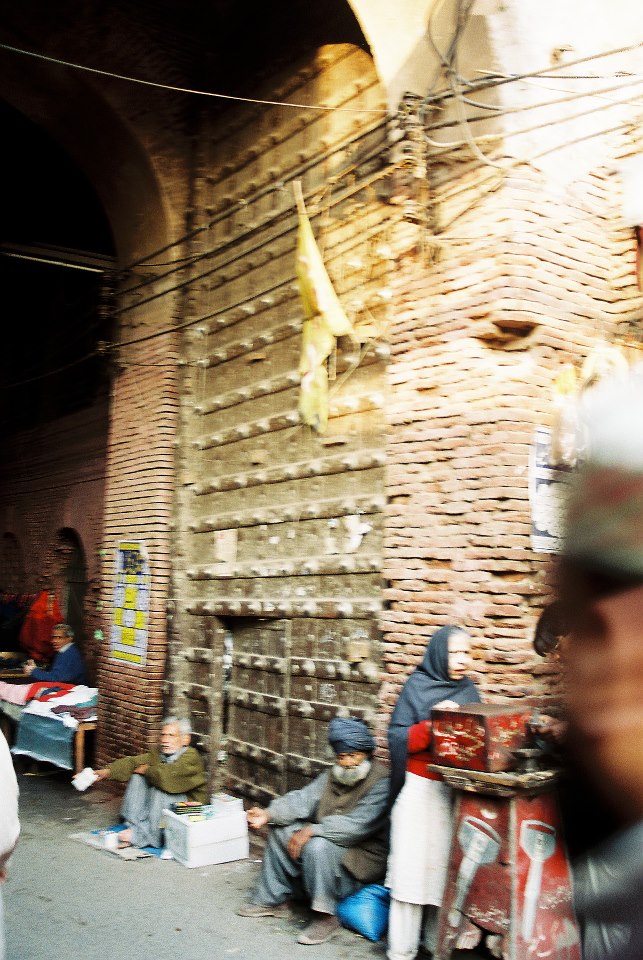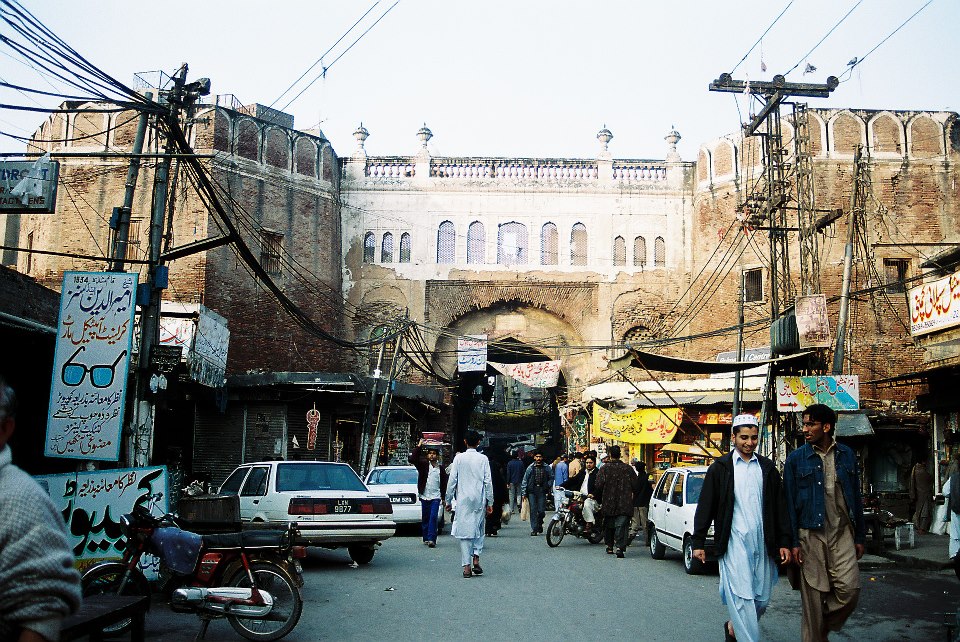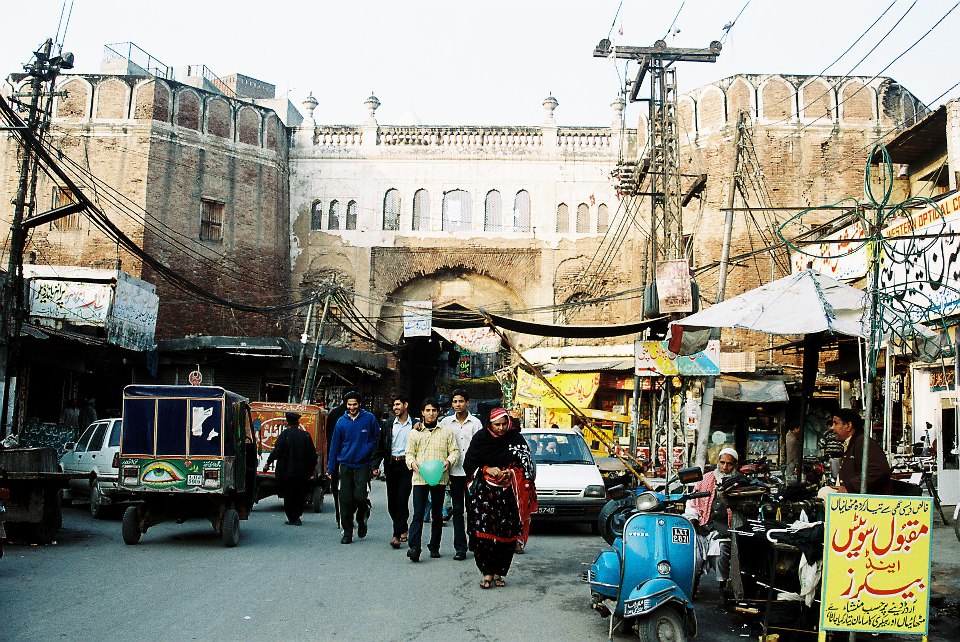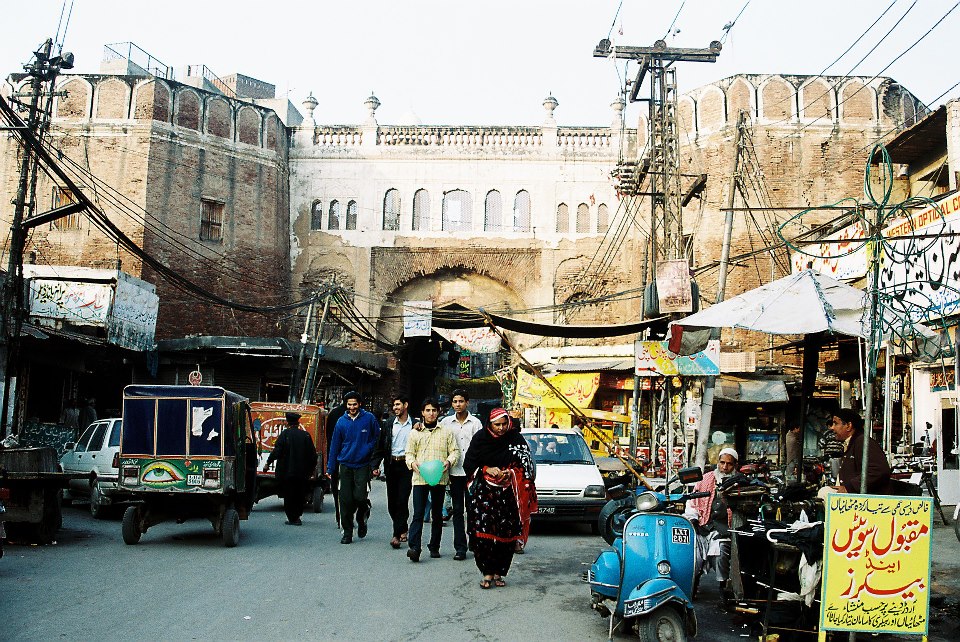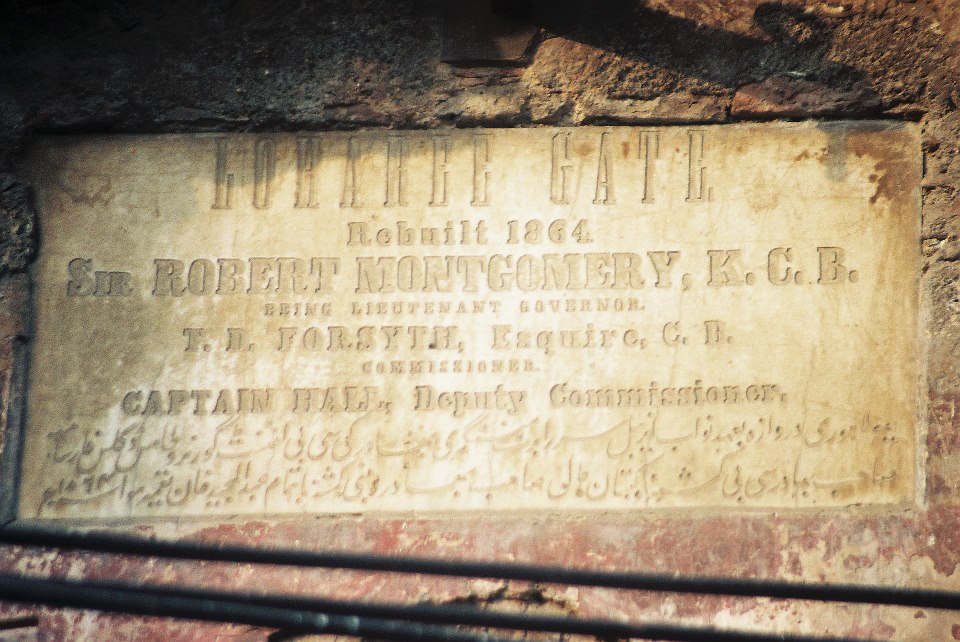
Written and researched by Mudassar Bashir
Translated by Prof Tariq Maqbool
Gates of the Walled City of Lahore
You could not step twice into the same river; for other waters are ever flowing on to you. (Heraclites)
“Man is a social animal” and can not live alone. Human history shows a constant evolution of different lifestyles as adaptation to the environment is a continual, cultural and learned process. At first, humans started dwelling in caves and forests and they were merely hunter- gatherers. As populations grew, there was an increased demand of food and greater dependence on plants. This led to the independent development of agriculture at different points of human history in different lands particularly near the banks of rivers and streams.
Earlier, the humans settled into small villages and then these villages grew into towns and big cities. Most of these towns and cities were fortified with walls and ditches to defend them from potential aggressors. Walls may only be crossed by appropriate city gates. Initially, these fortifications were simple constructions of wood and earth, which were later replaced by mixed constructions of stones piled on top of each other without mortar. From very early history to modern times, walls have been a near necessity for every city. Uruk in ancient Sumer (Mesopotamia) is world’s oldest known walled city. Some settlements in the Indus Valley Civilization were also fortified. By about 3500 B.C., hundreds of small farming villages dotted the Indus floodplain. Many of these settlements had fortifications and planned streets. The stone and mud brick houses of Kot Diji were clustered behind massive stone flood dykes and defensive walls, for neighboring communities quarreled constantly about the control of prime agricultural land. Mundigak (c. 2500 B.C.) in present day south-east Afghanistan has defensive walls and square bastions of sun dried bricks. These walls had gates to control the traffic moving in and out of the cities. Lahore like other ancient cities was fortified by a wall with thirteen gates to control the traffic flow. The gates and wall was first constructed in Mughal King Akbar’s times and the fortification was thirty feet high. Later, Maharaja Ranjit Singh reconstructed the fortification but decreased its height to fifteen feet. The city wall was accompanied by the ditches to reinforce the defense system. The ditches were topped up with the mud and gardens were planted around the city in the British period. These gardens were the center of cultural activities such as horse racing, wrestling, classical and folk music playing, kite flying etc. Minarets of the Shahi Mosque, Maharaja Ranjit Singh’s Smadhi, the brilliance and magnificence of the Royal Fort and the peaceful flow of the river Ravi along its walls made it a very charming and picturesque place to visit. Our main object is to discuss the gates of Lahore, so we start our discussion with the Delhi Gate and going along the Circular Road, end it on the Akbari Gate. The history, origin, identification and other related topics will be discussed and explored in details.
1-Delhi Gate
The Delhi Gate was once the main entrance to the walled city of Lahore and people mostly coming from the east used to enter the city through this gate. It is named as Delhi gate because of its opening on the highway from Delhi to Lahore. The gate was first built during the Mughal era. On its left, there is famous food grain market “Akbari Mandi” named after Mughal emperor Akbar. According to an Italian tourist who visited this market in the Mughal era, camels and elephants were commonly used as beasts of burden. It shows it was so big and vast but now it is just the opposite.
The Delhi Gate is one of those gates which were reconstructed during British period. The remains of the old gate still exist in depleted and destitute condition known as “Chitta Darwaza” (white gate). The other buildings attached with the old gate were demolished as well in the British period. Not far from the gate, is famous Mosque Wazir Khan. This mosque was built in the Mughal era and is famous for its engravings on the walls and roof. A few steps from the mosque is the mausoleum of Sayyed Sakhi Suf, a venerable sufi saint. Beside it; there is also the tomb of Imam Gamoon, another sufi saint.
The upper storey of the gate was used by the government officers and policemen. There used to be a gigantic wooden gate mentioned in many history books which was used to open and close the gate. Although the gate suffered a lot during 1947 riots, it has been renovated and is still a flourishing place. After 1947, the building of the gate and the royal bath adjacent to it were used as a school building. It was also used as a party hall for marriage and religious ceremonies. But now the royal bath is under the custody of the department of archaeology however, the building of the gate is still used as a girls’ school. Interior of the gate is dome shaped but the roof is plain and even. The entrance is bordered by windows and doors of the neighbouring houses. On top of the windows, there are nests of pigeons, a characteristic feature of the old city’s life. Lower and ground floors are occupied by the janitors and attendants. Some rooms are under the custody of the health department. At the entrance, on both sides of the gate, there are shops and movable wheel barrow shops. They sell food stuff such as vegetables, fruits, ghee, oil and other items of daily use such as detergent powder, soap and shoes etc., Bangles, artificial jewelry, anklets, bracelets, earrings, lockets, necklaces and other metal ornaments are sold on the wheel barrow shops. From Delhi Gate to Chitta Darwaza, there are so many shops selling a variety of things. Under the Chitta Darwaza, there are people selling rosaries and caps on the bicycles. The bullock carts, the donkey carts, horse coaches, the wheel barrows and the labourers etc that the twenty first century is still centuries away from this place.
2- Zaki Gate alias Yakki Gate
This gate is named after a celebrated saint Pir Zaki. As the sound of letter “z” (zee) is interchangeable with the letter “Y” (Ya) with the passage of time it becomes Yakki Gate instead of Zaki Gate. The gate has been demolished during British period due to its depleted and exhausted condition but the grave of Pir Zaki along with some other graves still exist there. There is no historical background about these graves and their origin but only legendary stories. The legend goes on like this that Pir Zaki and his followers or disciples died fighting against the Mongol invaders. It further adds that even after Pir Zaki was beheaded, his headless body kept on fighting for a few metres or so. Therefore, the head and body were buried in different graves. His burial chamber is a few steps from the city and in front of it there is a famous mosque “Madina Mosque”. A few step s away, there is a government hospital and a police station.
3-Khizri Gate or Sheranwala Gate
There are two traditions about the origin of this gate’s name. According to the one, it is named after Khawaja Khizar (A.S) whose name is associated with waters, rivers, seas, boats and navigation. As the river Ravi used to flow very close to this gate by the side of the walled city and the tomb of Pir Balawal Shah and the Bara Dari of Sher Singh was not far from it where the river was navigated by boats and small ships, so it was named Khizri gate. There is a Khizri Muhallah (neighborhood) just after crossing this gate which supports this old tradition. Another tradition about the origin of its name as Sheranwala gate is that In the times of Maharaja Ranjit Singh, two lions in the cage were placed beside the gate and the guards had to take care of them as well as the gate. It was then that it was named as Sheranwala gate due to its association with the lions. When the British took over, they removed the lions the carved images of the lions on both sides of the upper floor remained and are reminiscent of Ranjit Singh’s times.
This gate is on the road leading from Lahore Railway Station to Pakistan Monument (Yadgar‐i‐Pakistan). After crossing Ek Moria Bridge, on the left side, there is a government hospital along the waterway and the newly rehabilitated wall of the old city. Along the wall, there is a garden which used to be a ditch filled with mud during British period. Not far from the hospital, there is a mosque called Sheranwala mosque or Jamia Masjid Ghausia. On the left of the mosque, there is the tomb of Molana AbdulQayum. The road coming down from the gate is very steep and is known as Sheranwala Ghatti and same is the case with the gates lying next to it. This gives support to the assumption that these gates were built so high because of the vicinity of the river Ravi.
A new gate was built in 1990’s and a few steps away from it, stands the old gate. There are old wooden pieces attached to it and the small rooms in the interior are used as warehouse by the shopkeepers. There is an old school beside the gate which was established in 1889. Many celebrities graduated from this school and one of them is the famous classical singer Ustad Aziz‐ud‐Din. A little far from the school is the mosque associated with Molana Ahmad Ali Lahori. A few steps from this mosque, there are reminiscent of the old gate with the craved lions on its upper storey. There is a wooden tablet down under on which the words, “Katri Babu” are engraved. The remains of this Katri or Haveli are still there with its depleted doors, windows, balconies showing the nice woodwork and telling many untold stories of this transient world. Under the gate, there is a small tea shop and the smoke rising from its stove has badly affected the ceiling of the gate. There is a small market or bazaar and the neighbourhood is called Khizri Muhallah reminding the old name of this gate.
4-Kashmiri Gate
The "Kashmiri Gate" is so named because it faces the direction of Kashmir. It is one of the gates reconstructed by the British and its old style was not transformed. Like Sheranwala Gate it is linked with the reconstructed wall of Lahore’s old city. A steep path constructed with Nanak Shahi bricks leads to the main road passing by. This steep path is known as Kashmiri Ghatti (pass). There are remains of the old wall reconstructed in Ranjit Singh’s times accompanied by some depleted buildings with their dilapidated doors and balconies standing as a proof to the indifferent attitude of authorities toward this historical heritage. Kashmiri Gate still has wooden door valves and arches. Like other gates, the interior of this gate has many shops. There are tea and juice stalls after crossing the gate. Left side of the road is used as parking by the traders of nearby markets. Then there is a girls school established in an old haveli which is under construction now-a –days. Nobody has any information about this haveli but in some history books it is mentioned as “Haveli Rani Gul Begum’. It is named after one of the wives of Maharaja Ranjit Singh who used to live in this place after her marriage with Maharaja.
5-Masti Gate
There are two traditions about the origin of this gate’s name. One traditions says that it is named after a royal guard Masti Baloch who performed his duties with great dedication and commitment. According to another tradition which is more plausible, its original name is Masiti Gate (Masit is for mosque in Punjabi) which was distorted into Masti Gate as a few yards from the gate stands “Begum Shahi Mosque” of Mughal era. It was destroyed during British period due to its deteriorated condition and a comparatively small doorway was built. But now there exists neither the gate nor the doorway. There is a two feet wide and five feet high pillar on the extreme left of the road unnoticeable among the shops; the sole remain of this gate. A steep path known as Masti Ghatti (slope) goes down to link it with the main road. After crossing the gate, the street leads to the Chune Mandi where there is a historic Sikh temple named after their fourth Guru Ramdas. Along the steep path, there is mushroom growth of the market places eclipsing the whole beauty of the wall and the gardens around it. There are vendors, hawkers, traffickers selling edible items moving around here and there. Just opposite the gate, the neighbourhood is known as Badami Bagh but there is no trace of any garden except the iron market sprawling all around there. On the left side of the Masti Ghatti(slope) ,there is the building of Masti Gate police station.
6-Roshnai Gate alias Hazoori Bagh Gate
This gate is known as Roshnai Gate because of its association with the lights. The western side of the Lahore Fort was housed by the courtiers and the elite class and they set alight their havelis and houses with lamps and lanterns by the royal decree soon after the sunset. As it was more illuminated compared to other gates, so it was known as Roshnai Gate. It is along the western wall of the fort. It was used as a main entrance to the fort by the courtiers and other dignitaries till the times of Ranjit Singh.
Hazoori Bagh that lies between the fort and the Royal (Badshahi) Mosque is in proximity to this gate. People started calling it Hazoori Bagh Gate after the independence of Pakistan. It looks like part of the fort as revealed by the style of its construction. This gate can be approached either by the high road opposite to the Iqbal Park (Yadgar-i-Pakistan) that leads to the Royal Mosque. The second approach is from the road besides the Lady Wellingdon Hospital going side by side with the wall of the Royal Mosque leading to a garden where the Roshnai Gate stands reminding us its past glory. There used to be a cannon beside this gate till 1990’s but it is no more there and nobody has any idea about its whereabouts.
7-Taxali Gate
Unfortunately, it is one of those gates which have been completely lost and exist only in name. This gate was called Taxali because there used to be a mint (Taxal in the local language) in the Mughal era. That mint has also met the same fate and nothing is left there but the old Taxali mosque still survives. On the left of the road leading from Pakistan Monument to Data Darbar, there is a slope path. This slope bifurcates into two paths, one leading to Roshnai Gate and other leading to Taxali Gate. The building of the Taxali Gate had been completely lost since long but the old bazaar along it still survives. In the beginning, there is ever close Ustad Daman’s Academy which used to be the sitting place of well known Punjabi poet “Ustad Daman”. Interestingly, in the times of Akbar, the great Mughal King, one of the greats of Punjabi poetry, “Shah Hussein” used to live in the same one room house. A little away, there are a lot of tea stalls, tea shops and Pan shops. Beside them, there is a big shoe market. These shops sell traditional embroidered and fancy shoes and sandals. This bazaar is the part of the notorious, “Heera Mandi”. The buildings above the shops are housed by the dancing girls who are sex workers running their business under the cover of singing and dancing. A little further from the bazaar, there is “Novelty Cinema” and not far from it, there used to be the building of “Aziz Theatre” but theatre has no place at such a place now. There are many food stalls and restaurants there as well. A little away from these restaurants, there is a market where musical instruments are sold and repaired. Close by is the building of Tibbi police station. There used to be two bazaars even after the partition known as “Do Rupiah” and “Punj Rupiah” bazaars but they are completely lost and survive only in history books. Not far is the building for the healthcare of women of this area. May be it provides them medical care but who cares about their spiritual and mental health which has long been buried alongside this gate.
8-Bhatti Gate
This gate is named after the people inhabiting this area earlier in the history. They belong to the caste “Bhatt” so the gate was known as Bhatti Gate. At present, none of the Bhatt people live there. To the southwest of this gate, there is the mausoleum of “Hazrat Ali Hajveri alias Ganj Bakhsh” and this is one of the reminiscent of “Ghazanavid Period”. A road from this gate leads straight to Badshahi Mosque and alongside it, there are many Havelis which have are not in their real shape and housed by many families who have no idea about their historic background.
In front of the Bhatti Gate, the road is very crowded as there is bus stop, wagon stop, and motorcycle rickshaw stop spreading noise, smoke all around making it hard to see the clear sky even in the broad daylight. This pollution has taken away all the beauty and glory of the place and has metamorphosed it into one of the ugliest spots in the city. There are shops along the bus stop where people can buy and sell birds of different kinds.
Bhatti Gate was reconstructed by the British and its old building stands near the open drain. The Bhatti Gate police station building is next to the old building of the gate. The gate still has wooden arches which have lost all their beauty after being painted green very badly. A few steps from the gate, there is a decaying house. This house has a historical significance as the great poet, “Allama Muhammad Iqbal” lived in this house for more than one year but nobody has shown any interest to preserve it. A little further away, there is Justice Latif’s Muhallah (locality). Justice Abdul Latif who wrote the famous book “History of Lahore” used to live at that place.
There are many food stalls and other items for sale in the shops surrounding the gate. The road leads to “Bazaar Hakimaan” where there is no more any Hakim (physician) as the place used to be teemeing with physicians of high caliber in the past. Their prescriptions were buried along the other arts and sciences of the past and nobody has any idea about the research they did and the medicines they used to treat all kinds of diseases.
9-Mori Gate
It is the smallest among all the gates of Lahore. According to one tradition, this gate was built by Malik Ayaz when he conquered Lahore in Mahmud of Gazna’s times. But another tradition which is more reliable tells us that it was used as sewerage when the Sikhs ruled Lahore. All kinds of waste and garbage were thrown out of the city through the sewerage passing through this gate. The sewerage was connected to all other sewers in the city. As the word “mori’ in Punjabi means sewer so this gate was known as “Mori Gate”. British didn’t take any step to reconstruct it and it was left in a decaying state and with the passage of time, this gate was completely lost in history. The sewerage still exist and there are always heaps of garbage and trash outside this gate.
10-Lahori Gate or Lohari Gate
It is considered to be one of the earliest gates in Lahore. In the early part of 11th century, the city was badly affected by the wars between Mahmud of Ghazna and Raja Jai Pal. At one time, it was even uninhabited. When Malik Ayaz was appointed viceroy of North India, he made Lahore, the seat of government. It is at that time, that the people started inhabiting the city particularly this part of the city and this gate was known as Lahori Gate since then. It was rebuilt in British period with small bricks in the same old style. The rooms were built in the upper storey for officials. It has same wooden arches found in other old gates of Lahore. Coming from Mori Gate, on the left, near the entrance to this gate, there is Muslim Masjid (mosque) named after renowned muslim scholar Molana Muhammad Bakhsh Muslim. Across the road, there is famous Anarkali Bazaar. There are shops under the mosque. On the corner of the bazaar, leading to the gate, there is a flower shop selling different kind of fresh flowers like red roses, jasmine etc, A few steps away, there is the building of Lahori Gate with a slab showing the details of reconstruction of this gate in Hindi and English languages. There are old and heavy arches and they give the door a look of some old entrance to a fort. Like other gates of Lahore, there are many food stalls, tea shops and other eating places. After passing through the gate, there are shops of bone setters and herbalists practicing their centuries old art. Next to them, there are some shops selling items associated with old culture and living style like Hookah, mats, tobacco and jute to weave fibres for the cots and there are shops selling clay pots and utensils reminding the old culture of this part of the world.
11-SHAH ALAM GATE:
This gate does not exist anymore as it was completely destroyed in the riots of 1947. It was the second gate named after a Moghul king; it was named after King Bahadur Shah Alam Shah I who succeeded to the throne after the death of his father King Aurang Zeb. He shifted his capital from Delhi to Lahore to crush the Sikh rebellion. He died in Lahore and this gate was named after him. It was reconstructed during British period with utmost care to keep its old look and glory intact. This gate was situated between Lohari gate and Mochi gate on the southern side of the city. Going from Lohari gate to Mochi gate, there is a square called Shahalmi Chowk, the lone proof of its existence there once. There was also a Hindu temple known as “Shahalmi Mandir.” The real name of the temple was Ratan Chand temple and inside it there was a magnificent pond. This temple along with the pond was also destroyed and there are no remains of the gate or the temple there.
After independence, the remains of the gate were destroyed completely and a double roadway was constructed linking the mazy and labyrinthine streets and marketplaces such as Azam Cloth market to other parts of the city. This led to further destruction of the old city and its culture as it prompted the construction of tall buildings and shopping malls and plazas in place of havelis and old houses. As T.S. ELIOT says,
“What we call the beginning is often the end” (Little Gidding V)
12-Moti Gate or Mochi Gate
This gate is next to Shah Alam Gate. Its old name is Moti Gate which is distorted into Mochi Gate. In the times of great Mughal King Akbar, the person who kept watch over this gate, his name was Moti Ram. He performed his duties diligently and devotedly and this gate was named after him. This gate was completely pulled down during the British period and was never built again. The British established a garden beside the road which has been the scene of many historical meetings and processions held by different political parties and other groups. In the beginning, there is the building of Mochi Gate surrounded by the shops selling fireworks and other dangerous explosives. Many accidents have taken place there due to these explosive materials but the authorities never took any serious steps to guarantee the safety of life in the surrounding area. A few steps away, there is a “Khoya Bazaar” on the left and the mosque of “Mullah Muhammad Saleh Kamboh”. Next to the mosques, there are shops of kites and kite flying materials. There are also shops of kebabs and sweets. Beside these shops, there is “Muhallah Sadakaraan” where one of the great classical singers of the subcontinent”Ustad Chote Ghulam Ali Khan” used to live. It is unfortunate that most of the people have no idea about him and his art and it is a forgotten chapter of history like the magnificence and glory of this city.
13-AKBARI GATE
This gate is named after the Mughal King Jalal-ud-Din Akbar. This gate and the food grain market inside both are named after Akbar. During British Raj, it was reconstructed and the glory was restored . Unfortunately , after the independence, it was demolished and only the inn attached to it was left. The walls of the inn were attached with those of the gate but there is no sign of the gate now. This gate is between Delhi gate and Mochi gate lying on the eastern wall of the old Lahore city. Coming from old Crown Bus Stand to Akbari Police station, it used to stand on the left side of the road. The present police station is housed in the old building of the inn attached to the gate. There is a road leading to the Akbari food grain market. A little further, on the left , a road leads to the Delhi Gate. It is one of the busiest marketplaces in Lahore. There are shops of all kinds of food grains like wheat, rice, lentils, jams, marmalade, and herbs of all kinds. Different modes of transportation are operational here, the old ones with the new ones. There are horse, mule, and donkey driven carts along
Please see below, views of Lohari Gate:
